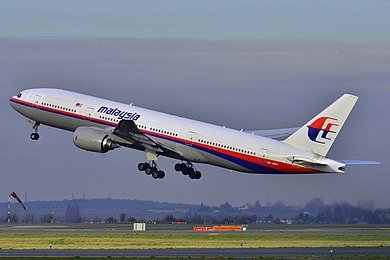On March 8, 2014, Malaysia Airlines Flight 370 vanished from radar screens, leaving behind one of the most perplexing aviation mysteries in history. The flight, carrying 239 passengers and crew from Kuala Lumpur to Beijing, disappeared over the South China Sea, triggering a massive international search effort that continues to this day.
The disappearance of Malaysia Airlines Flight 370 sent shockwaves throughout the aviation industry and the world. The sudden vanishing of a modern commercial aircraft equipped with advanced technology baffled experts and ignited a wave of speculation and sorrow.
As the flight took off from Kuala Lumpur International Airport, everything seemed routine. However, just over an hour into the journey, the aircraft’s transponder, which communicates with air traffic control, ceased to transmit. Radar data indicated that the plane made a sharp turn to the west, deviating from its planned route. The last known communication from the cockpit was a casual “Goodnight, Malaysian three-seven-zero.”
Immediately, search and rescue operations were launched, involving multiple countries and organizations. The initial focus was on the South China Sea, where the flight disappeared from radar. However, as days turned into weeks, and weeks turned into months, the search area expanded to include vast stretches of the Indian Ocean.
Despite the extensive search efforts, the aircraft remains largely unlocated. The lack of tangible evidence has fueled countless theories and speculations about what happened to Malaysia Airlines Flight 370. Some suggest that the plane was hijacked, while others believe it was a deliberate act by the pilot or crew. There are even theories involving a catastrophic mechanical failure or a terrorist attack.
One of the most significant pieces of evidence in the investigation was the discovery of debris, confirmed to be from the missing aircraft, washed ashore on the coastlines of the Indian Ocean. This discovery provided some hope that the mystery would be solved, but unfortunately, it did not lead to any breakthroughs in locating the main wreckage.
The disappearance of Malaysia Airlines Flight 370 prompted a global conversation about aviation safety measures and the need for improved tracking systems. The incident exposed vulnerabilities in the current tracking methods and highlighted the importance of real-time monitoring of flights. In response, the International Civil Aviation Organization (ICAO) established new guidelines for aircraft tracking, requiring airlines to report their positions every 15 minutes during normal operations and every one minute in the event of an emergency.
Furthermore, the incident led to the development and implementation of satellite-based tracking systems, such as the Automatic Dependent Surveillance-Broadcast (ADS-B) technology. ADS-B allows aircraft to continuously broadcast their positions, enabling real-time tracking and enhancing overall aviation safety.
The disappearance of Malaysia Airlines Flight 370 remains an open wound for the families of the passengers and crew who were onboard. The lack of closure and unanswered questions continue to haunt them, as they grapple with the uncertainty surrounding the fate of their loved ones.
While the search for Malaysia Airlines Flight 370 continues, it serves as a stark reminder of the complexities and challenges involved in investigating aviation mysteries. The incident has sparked ongoing discussions about the need for improved communication, coordination, and technology in the aviation industry to prevent similar tragedies in the future.
For more information on the disappearance of Malaysia Airlines Flight 370 and the ongoing search efforts, you can visit the following external references:
- Malaysia Airlines Official Website
- BBC News – Malaysia Airlines plane disappearance
- CNN – Malaysia Airlines Flight 370
- The New York Times – Malaysia Airlines Flight 370
The disappearance of Malaysia Airlines Flight 370 on March 8, 2014, will forever be etched in history as one of the greatest mysteries in aviation. The world continues to hope for answers and closure, as the search for the missing aircraft persists.
SEO Excerpt: On March 8, 2014, Malaysia Airlines Flight 370 vanished from radar screens, sparking one of the greatest aviation mysteries in history. The flight, carrying 239 passengers and crew from Kuala Lumpur to Beijing, disappeared over the South China Sea. Despite extensive international search efforts, the aircraft remains largely unlocated, leading to widespread speculation and sorrow. The incident prompted calls for improved aviation safety measures and satellite tracking of flights. Explore the historical information, evidence, and ongoing search efforts in this article.

